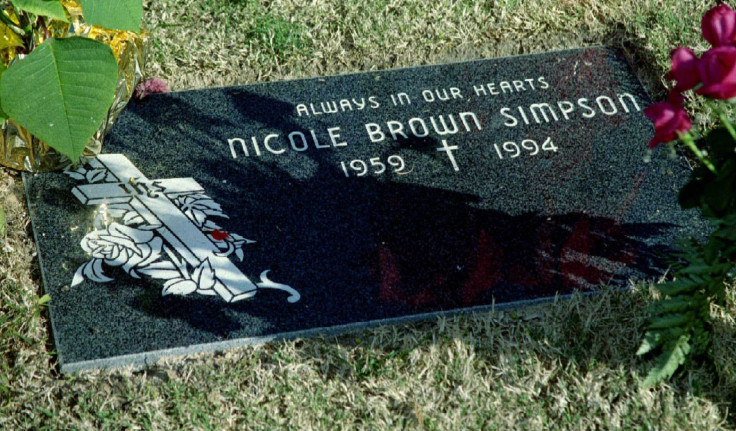Nicole Brown Simpson House Murder Anniversary: What We Still Don't Know About June 12, 1994 Case

The murder of Nicole Brown Simpson and subsequent trial of ex-husband O. J. Simpson has continued to hypnotize the nation over the course of two decades after Brown Simpson’s death. Many people are still looking for answers in the criminal case that has remained largely unsolved, despite the general consensus being that Simpson killed his ex-wife and her friend Ronald Goldman in cold blood. Simpson’s trial was the most followed criminal trial in American history and marked a cultural flash point centered on a Hollywood couple torn apart by jealousy and revenge.
Twenty-one years later, the murders of Brown Simpson and restaurant waiter Goldman on June 12, 1994 are still shrouded in mystery. Conspiracy theories have abounded, including that Simpson, a former professional football star and actor, hired a serial killer to murder his ex-wife for him. Other notions have been more bizarre, including that Simpson was brainwashed by the Illuminati to kill Brown Simpson.
Brown Simpson and Goldman were found dead in front of Brown Simpson’s condominium in the up-scale Los Angeles neighborhood of Brentwood. A coroner determined the victims had been attacked by surprise and suffered multiple stab wounds.
Nicole Brown Simpson and Ron Goldman Murdered. O.J. Simpson found not guilty by the racist OJ Jury. #furgeson pic.twitter.com/5lqmMqRyAD
— Steven Oracle (@TheStevenOracle) January 4, 2015Fingers quickly pointed at Simpson, who promised law enforcement he would turn himself in for questioning but ended up hightailing it across Southern California in his white Ford Bronco. Simpson was apprehended after a highly-televised chase involving dozens of police cruisers.
His trial was held at the Los Angeles County Superior Court in California. It began Jan. 24, 1995 and ended more than eight months later, on Oct. 3, with Simpson being acquitted on two counts of murder.
There’s still much the public doesn’t know about the night of June 12, 1994. For one, it was never fully proven whether Simpson was at the scene of the crime, as there was no video footage or witness placing him there. One of the first clues that led to suspicions against Simpson was a cut on his hand, which he initially said was the result of carrying a bag or luggage. He later said he had cut it on a broken glass in Chicago hotel.
Simpson’s case ultimately came down to questions surrounding crime scene evidence and DNA testing. At the time, DNA forensics was still a fairly new concept, and many people, including the jurors, were unaware of how it worked. The defense also questioned whether Simpson’s blood was cross-contaminated with the blood from the scene of the crime. They claimed the LAPD tampered with the evidence and planted Simpson’s blood at the scene.
Then there were the infamous black gloves. The bloody gloves were found at the murder scene, but when prosecutors had Simpson try them on in front of the courtroom, they were too small. Many have pointed to that moment as a turning point in the trial that at first felt like a slam dunk.
Top 10 Unsolved Crimes- The Nicole Brown/Ron Goldman Double Murder #Investigate http://t.co/0wuF66NyaG pic.twitter.com/0seSU11b6s
- Integrated Analysis (@IACINV) August 25, 2014Most experts agree today that Simpson committed the murders, however, he can never be re-tried because he was acquitted. Nearly two decades after the murder, in 2012, a death row inmate by the name of Glen Rogers told family and friends that he had murdered Brown Simpson and Goldman while Simpson stood nearby. His story was told in a documentary that came out that year.
"I'm absolutely certain that my brother Glen killed Nicole Simpson and Ron Goldman," Clay Rogers, who narrated the film "My Brother The Serial Killer," which debuted on the Investigation Discovery channel in November 2012, told CNN. "I know my brother did it because I've seen proof that he was there."
© Copyright IBTimes 2025. All rights reserved.






















